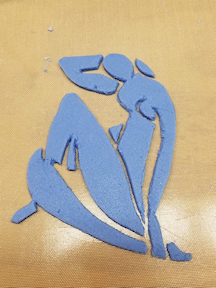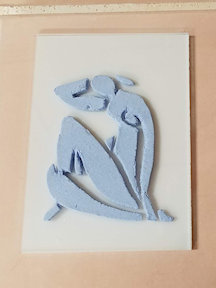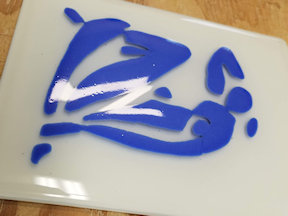New Product – Experiments in Glass Clay
I don’t own a ring saw, and never really had a need or desire to own one. For my pieces I cut my glass with a hand cutter. There are, however, some shapes that are very difficult or even impossible to cut by hand. Deep inside curves and right angles would be a few examples. This is usually not a problem in my designs, but every know and then a get a custom request where it would help to have a ring saw. A ring saw is for glass what a band saw would be for a wood worker.
On my last trip to my supplier I came across a new product (new to me at least) called Modeling Glass. This product is mixed with powdered glass to make a clay-like material. I wondered if this was something I could use when I wanted intricate designs and shape that I could not cut with my hand glass cutter.
With Henri Matisse’s Blue Nude as inspiration, I made and rolled out some of the glass clay to somewhere between 1 and 2 mm thick. I used a rolling pin with cardboard strips laid out on either side of the “clay” to get an even thickness. I then used an X-Acto knife to cut out the design. The glass clay was dried in my kiln at 200 degrees Fahrenheit for about 2 hours.
I was surprised at just how sturdy the pieces were when dried. I expected them to be more fragile. I put the glass clay design element on top of two 3 mm layers of glass and did a full fuse.
For the first experiment, the result was better than I expected. The design did shrink. Next time I will make roll my glass clay closer to 3 mm which should help with that. I also think at tack fuse temperatures the pieces will shrink less, but I wanted a glossy finish to my piece. At full fuse temperatures the glass did get glossy, albeit it did have a small amount of texture (small bubbles) which did not really bother me. You can see what I mean in the last picture posted below.
Full instructions and more information can be found at the website: https://www.modelingglass.com/ I think this product has a lot of potential and there will definitely be more experimenting in the future.
Here are some pictures of the process.







